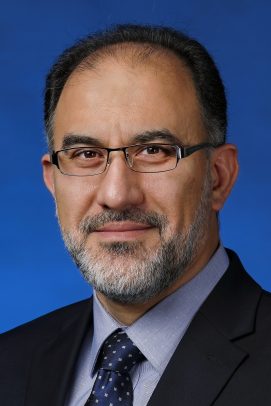What will America look like after pandemic ends?

As the COVID-19 pandemic has caused upheaval around the world, people have had to adjust their daily routines accordingly.
From telecommuting and e-learning to a greater reliance on e-commerce and video conference calls, many of these systems already were established but were not being depended on the way they are now.
Will these changes impact our future or will we return to the pre-COVID-19 way-of-life when the pandemic is over? What behaviors will remain and who will be impacted the most by the transition?
These are some of the questions that University of Illinois at Chicago researchers in the department of civil and material engineering’s UIC TransLab are investigating.
“Our research begins shedding light on how our lives are affected during the COVID-19 pandemic, and what America will look like after it is all behind us,” said Abolfazl “Kouros” Mohammadian, UIC professor and head of civil and materials engineering. “We have completed a first wave of a survey in Chicago and plan on a larger and national multiwave survey that would allow us to develop new longitudinal analytical methods, and wealth of information on social dynamics, attitudes and the behavior of U.S. households before, during, and after the COVID-19 pandemic.”
The researchers, who initiated their work by surveying approximately 1,200 Chicago area residents in April, sought feedback related to employment, spending, long-distance travel, working from home, grocery shopping and risk perceptions.
Some key findings include:
- Part-time employees have been most affected with more than 30% temporarily laid off and 10% losing their jobs.
- Those who worked in restaurants, food services and bars, along with those who worked in arts, entertainment or recreational industries were most affected.
- People have been spending more on grocery shopping and shopping for food, cutting from other errands, though household income is an important contributor to the latter behavioral dynamic.
- Lower-income individuals have undergone a sharper increase in grocery shopping, while cutting less spending from their non-grocery/food errands.
- 43% of respondents expect to travel less frequently via airplanes in the future.
- More than 60% of those who experienced working at home for the first time during the outbreak believe that their efficiency has not decreased.
- Most respondents (90%) continued to rely on in-store shopping for groceries, but the outbreak inspired online grocery shopping to increase among the participants from 0.4% prior to the pandemic to almost 10%.
- Respondents indicated their habits of online grocery shopping are considerably likely to persist after the pandemic is over.
- More than 75% of individuals perceive a high risk of exposure to COVID-19 if they were to visit hospitals, gyms and fitness centers.
The second segment of data collection for the study is underway in collaboration with researchers from Arizona State University. The effort, which has received $170,000 in funding from the National Science Foundation, is being conducted nationally and will target more than 5,000 U.S. residents.
The third portion of the study will be a follow-up survey that will be conducted six months after the end of the pandemic to investigate the behavioral rebound effects.
The researchers hope the results will help transportation and city planners proactively plan the “Smart City of Chicago,” a city that can better accommodate the needs of its residents during such pandemics, and hinder the spread of the virus instead of facilitating it.
“Old habits die hard, but the disruption of COVID-19 is different from other shocks in that it may actually change habits,” Mohammadian said. “There are some aspects to our disrupted lives that we may actually want to keep because we’ve been introduced to new technologies and ways of interacting that are convenient, and actually save time and money.”
Mohammadian and other UIC researchers were featured presenters during a recent Transportation Research Board webinar that attracted over 2,000 visitors and attempted to address to what extent American travel will return to the pre-COVID-19 levels. A recording of the webinar is available online.
